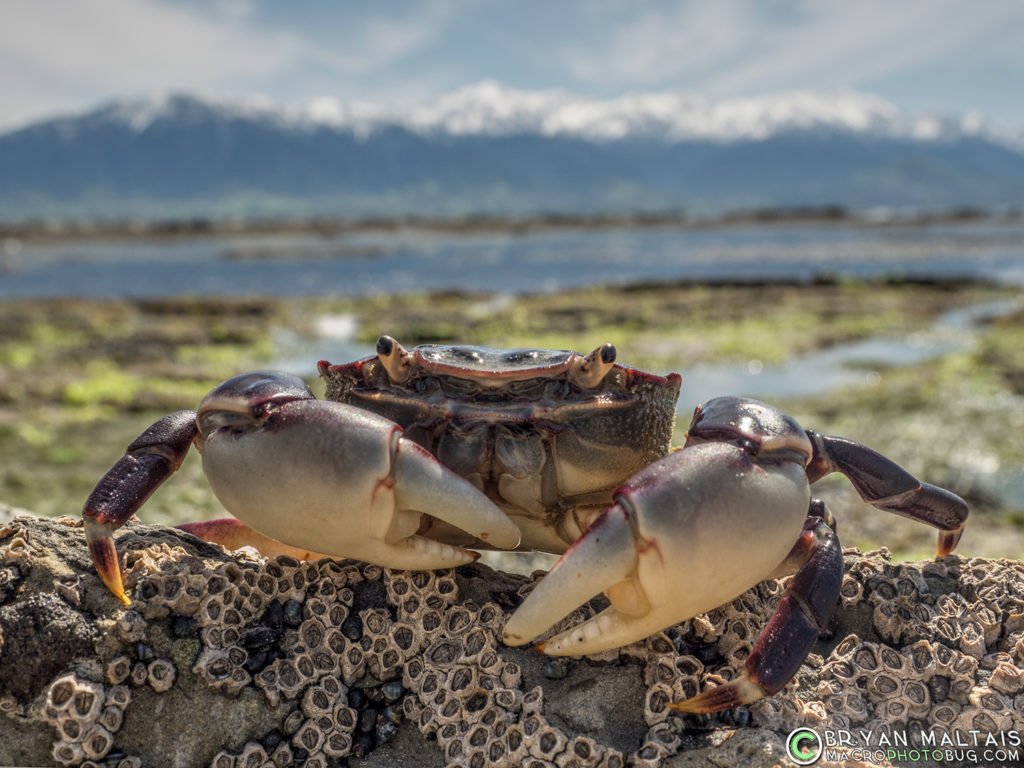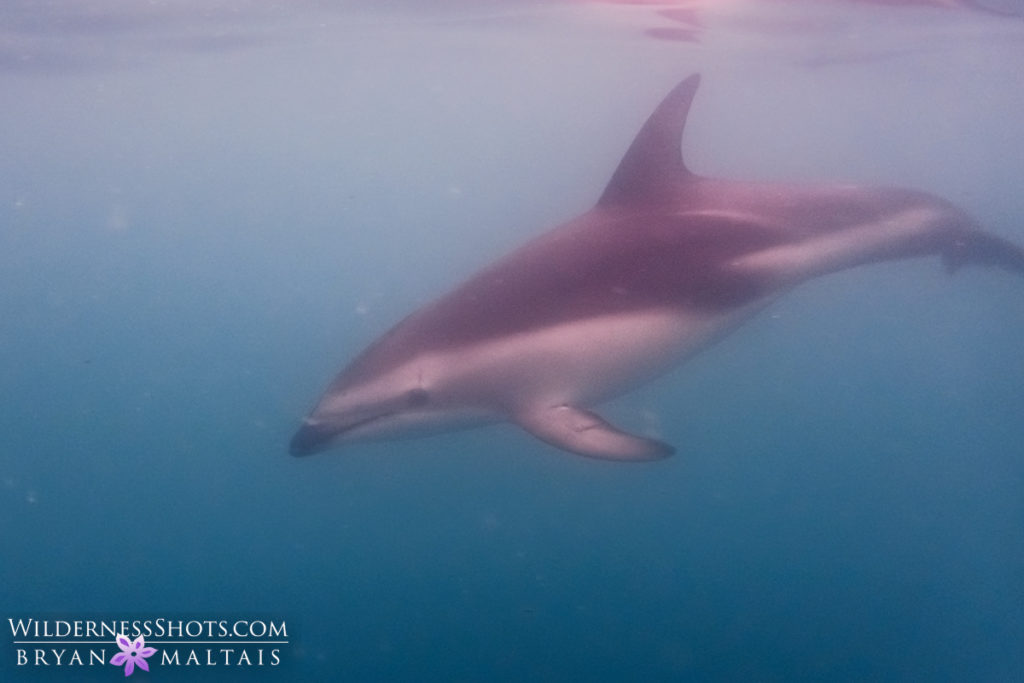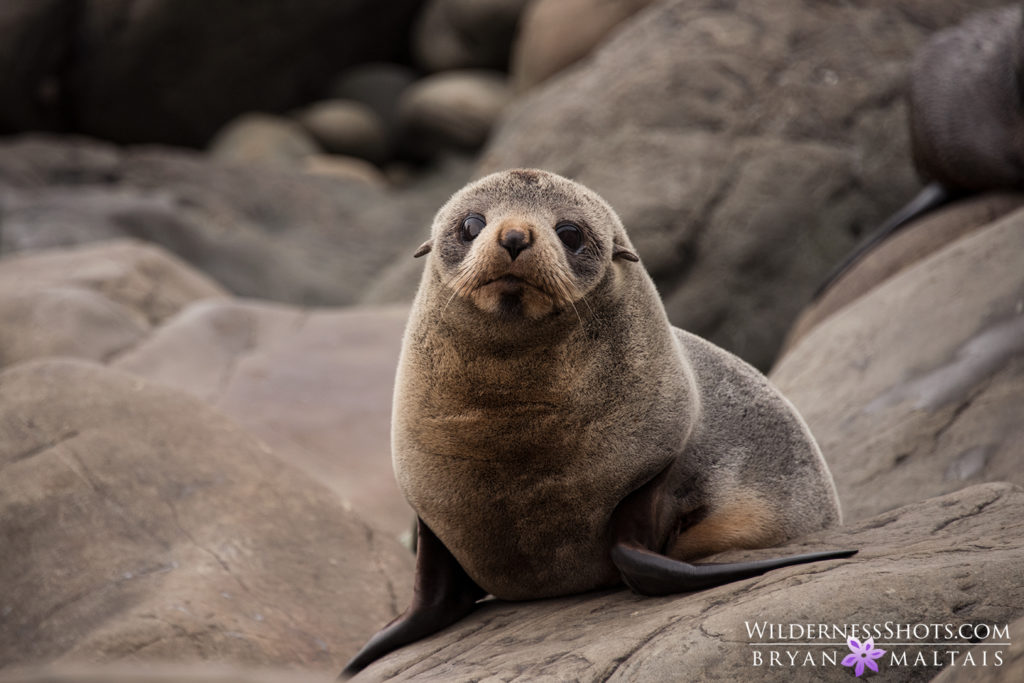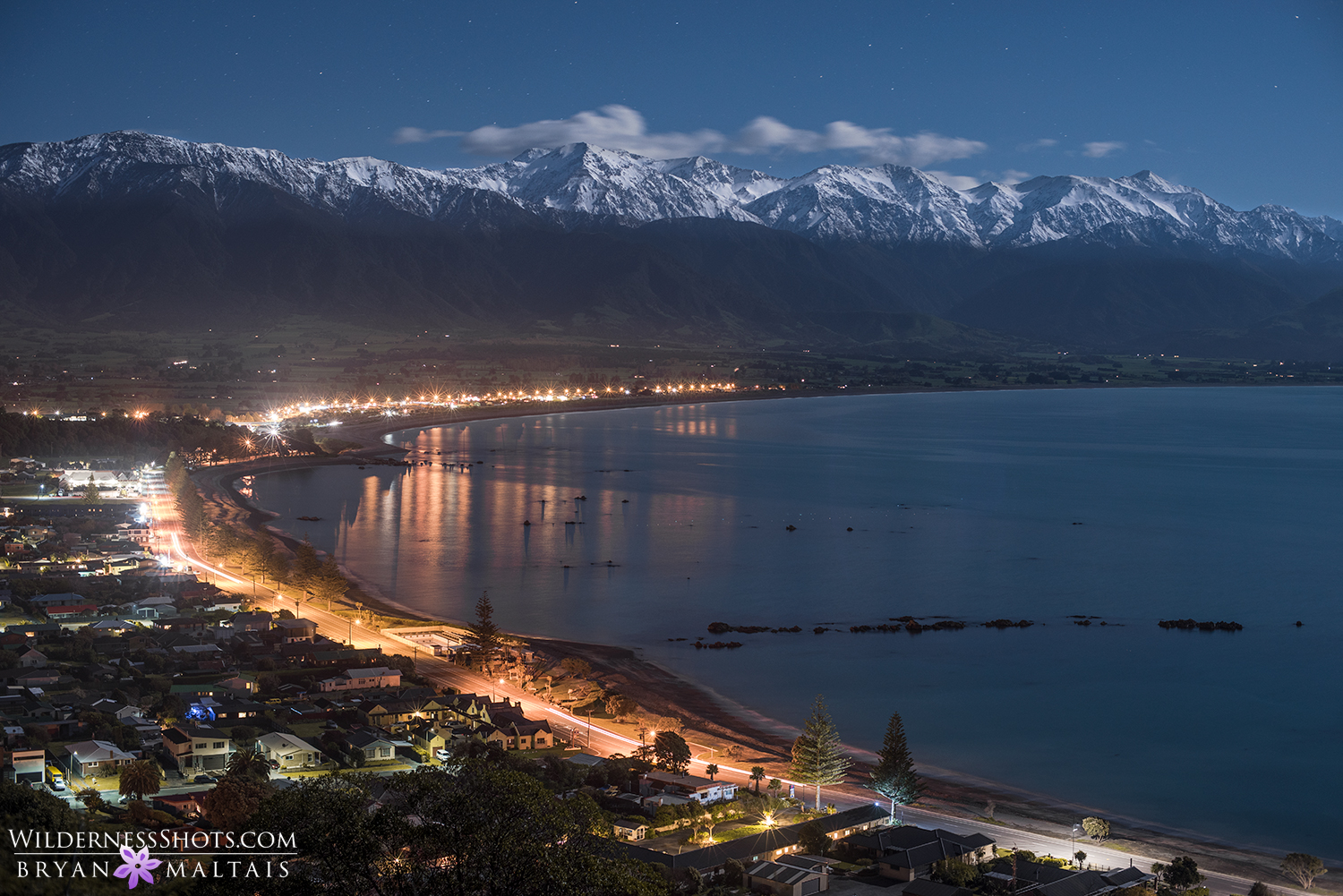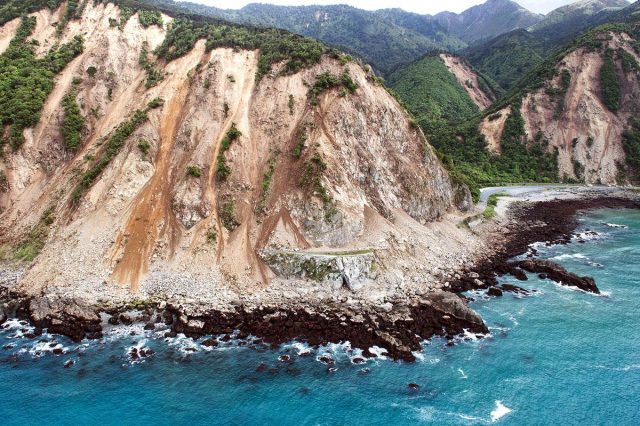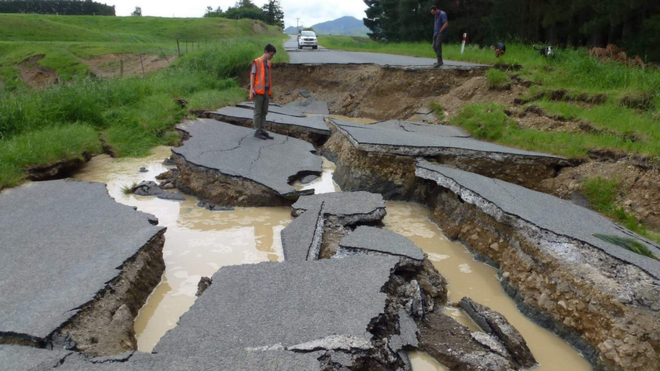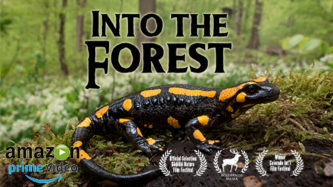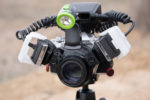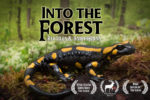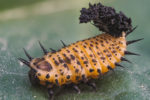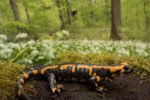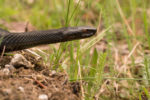October 16, 2016 (that’s the same as April in the northern hemisphere)
Nope, this post doesn’t conform to the topic of macro photography. For one, this is a “close-up” photo, not a true 1:1 macro. It’s also more about my adventures in the ocean village of Kaikoura than this lonely Purple Rock Crab. Too bad, he was really keen on being featured. I will say that it’s probably a rare opportunity to be able to photograph a crab with the ocean AND mountains in the background. I recently traveled through New Zealand for 3 months to shoot landscape photography. Kaikoura, I’ll have you know, is a little slice of rugged seaside paradise. It’s a mild climate where cold Pacific waves crash into the feet of huge, snow-capped mountains. It’s kind of like Alaska meets Florida, but without NASCAR.
As tranquil as Kaikoura was, this would abruptly change.
When tide is low there’s a vast shelf of rock that becomes exposed along the shore. I explored tidal pools looking for animals like this crab to photograph. Scores of locals also came out on to the rock searching for something. It appeared most curious, and likewise many of them discretely looked out of the corner of their eye wondering what the hell a man was doing photographing a crab. Curiosity got the best of me so I asked some people what they were up to. The first group was a Maori family composed of grandma and a clan of daughters and grandchildren. Grandma wore the traditional moko etched into her chin. They were searching for Octopus and Cockles to cook a family seafood feast with.
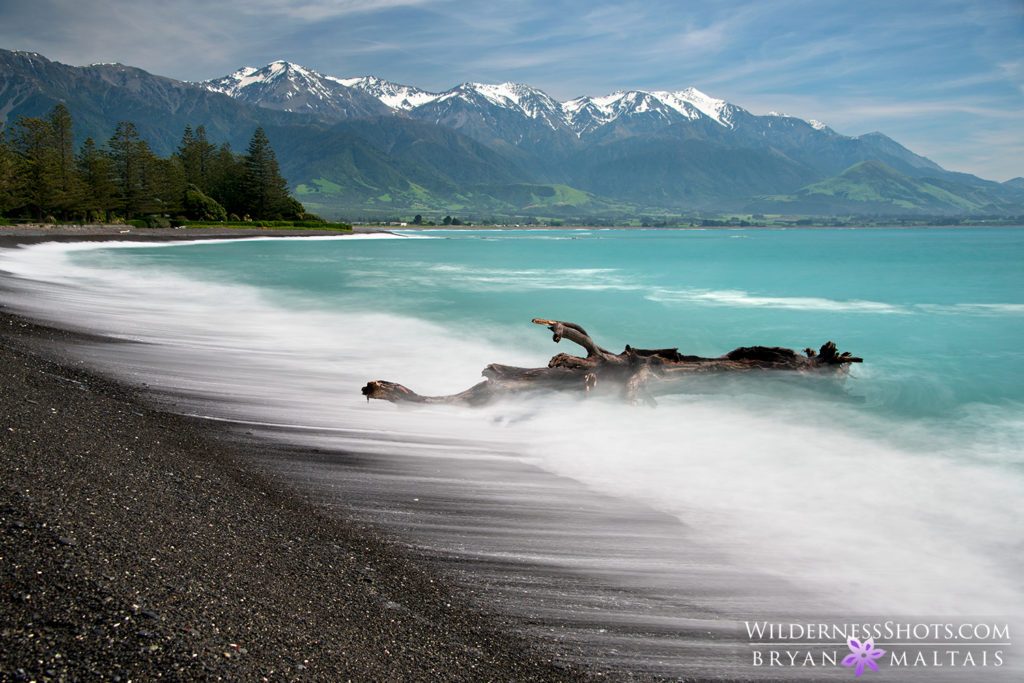
A portrait of Kaikoura. I used a 10-stop neutral density filter to allow for a 4 second exposure to blur the waves.
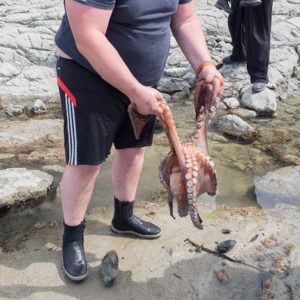 Other people were also searching for something, but they were carrying around checklists and containers. Turns out they were on a community scavenger hunt to find items such as sea glass, and particular types of shells. The highest ranking item was an Octopus. I then witnessed a man flipping a rock in a tidal pool and actually finding the tentacle of an octopus sticking out of a hole. He grabbed the tentacle and began pulling until the whole beast emerged. The mighty Kraken then wrapped its tentacles around the man’s arm and adhered its suction cups to his skin. It sounded like a roll of bubble wrap being popped when the man ripped the tentacles off his arm.
Other people were also searching for something, but they were carrying around checklists and containers. Turns out they were on a community scavenger hunt to find items such as sea glass, and particular types of shells. The highest ranking item was an Octopus. I then witnessed a man flipping a rock in a tidal pool and actually finding the tentacle of an octopus sticking out of a hole. He grabbed the tentacle and began pulling until the whole beast emerged. The mighty Kraken then wrapped its tentacles around the man’s arm and adhered its suction cups to his skin. It sounded like a roll of bubble wrap being popped when the man ripped the tentacles off his arm.
- I got to swim with Dusky Dolphins in the open ocean.
- A Fur Seal pup from the Ohua Seal colony
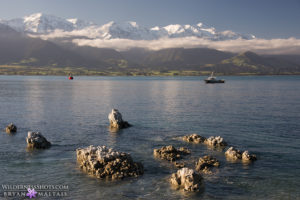 Before leaving, I wanted to sample the tasty sounding local specialty; seafood fritters, which were sold from food trailers along the beach. You could get various kinds, so I sampled crab fritters. I hope I didn’t eat a relative of this fine Purple Rock Crab. “Fritter” makes me picture something crispy, made from batter. But these “fritters” were scrambled eggs with seafood bits mixed in… more of a seafood omelet really. Delicious with lemon. There were also huge bushes of Swiss Chard growing wild along the beach. I’d be quite happy to be able to grow such specimens in my garden.
Before leaving, I wanted to sample the tasty sounding local specialty; seafood fritters, which were sold from food trailers along the beach. You could get various kinds, so I sampled crab fritters. I hope I didn’t eat a relative of this fine Purple Rock Crab. “Fritter” makes me picture something crispy, made from batter. But these “fritters” were scrambled eggs with seafood bits mixed in… more of a seafood omelet really. Delicious with lemon. There were also huge bushes of Swiss Chard growing wild along the beach. I’d be quite happy to be able to grow such specimens in my garden.
Kaikoura’s serenity was about to be be fractured. I returned there several weeks later on Nov 14 with some friends from Colorado who’d just arrived for a 2 week road trip. We contemplated spending the night in Kaikoura, but they’d seen all they needed to and wanted to drive on. That would be a consequential decision. We drove several hours north of Kaikoura to the Pelorus River and settled in for the night. At around midnight I was shocked awake by my campervan rocking back and forth. In a stupor, I thought it was pranksters shaking the van, but it turned out to be a 7.8 earthquake that lasted for 2 cumulative minutes! That’s stronger than the 2011 quake that ravaged Christchurch. What was it like to be in an earthquake? Where I was, my van swayed widely back and forth with a slight elliptical motion. I’d compare it to sitting in a boat in choppy water. Closer to the epicenter it might have been more abrupt. Aftershocks were almost non-stop for the rest of the night, and continued sporadically for days.
Kaikoura was the worst affected by the earthquake whereby all routes into town were severed. The roads that ran along the coastal mountains were covered by entire mountainsides that slipped off. Even the seal colony that I visited a few weeks back was engulfed by a massive landslide. This was exacerbated by abnormally high rainfall in the days prior to the quake that loosened the soil. Several sections of highway that weren’t covered were twisted and ripped apart where the earth heaved up and shifted.
- Phot credit: Sgt. Sam Shepherd-Royal New Zealand Defence Force Kaikoura Landslides
- Photo credit: BBC
Had my friends and I stayed in kaikoura that night, what would have happened? Indeed hundreds of travelers were stranded in Kaikoura, along with 340 rental vehicles. The travelers were heli-lifted to Christchurch by the NZ military, but the vehicles were left behind. While my travels simply would have been delayed, the entire economy of Kaikoura temporarily disappeared, locals faced extensive structural damage, farmers couldn’t reach livestock to tend them, and 2 people died. Had the quake happened during the day, there would probably have been many deaths in landslides on the highway. Imagine driving on a highway at full speed and having a mountain collapse on you.
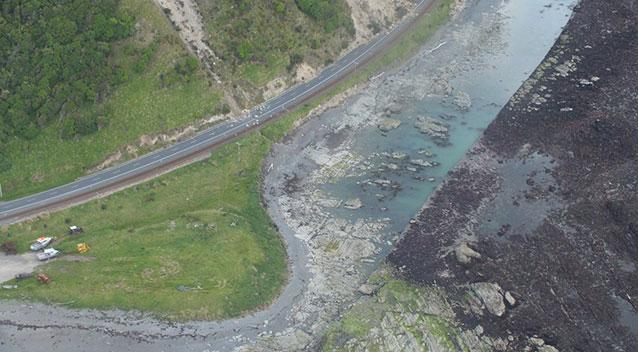
New land created when the seabed rose by 8 ft.
Photo credit:Taylor + Tonkin Raised Seabed
Geologically, the aftermath of the earthquake was most interesting. Large sheets of seafloor along the shore “popped up” 8ft out of the ocean, creating new land. The average elevation of Kaikoura rose by 28 in. The south island of New Zealand shifted 8 ft north.
The morning after the earthquake I wasn’t sure the extent of it. My friends in their own campervan actually slept through it! I tuned into local radio, which was exploding with emergency reports. We were in the middle of nowhere surrounded by forests and fields, so there was no apparent structural damage to be seen. The roads in this region seemed to be intact so we drove on to Abel Tasman. When we arrived in the coastal mountains in the north tip of the south island we encountered dozens of landslides, though none nearly as large as Kaikoura’s landslides. When you drop a foreign object on to an ant colony, the ants instantly detect that something is out of place and quickly clean it up. Mere hours after the earthquake, crews with diggers had already cleared all of the landslides that we drove up to. The Kiwis’ efficiency reminded me of fastidious ants.
Hwy 1 would be closed for the rest of my stay in NZ, which meant that there was essentially no travel possible along the South Island’s upper east coast. This was paralyzing to Kaikoura’s economy. However, within only a month and a half, the massive volumes of earth from the 9 major landslides were cleared. With much jubilation, access to Kaikoura from the south was restored at the end of December, but extensive road reconstruction was still to come.
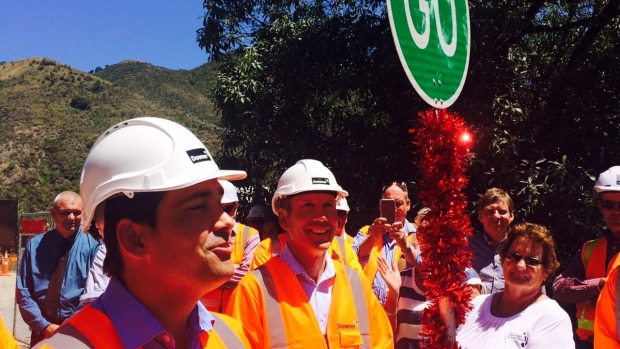
Hwy 1 reopens. Photo Credit www.stuff.co.nz

